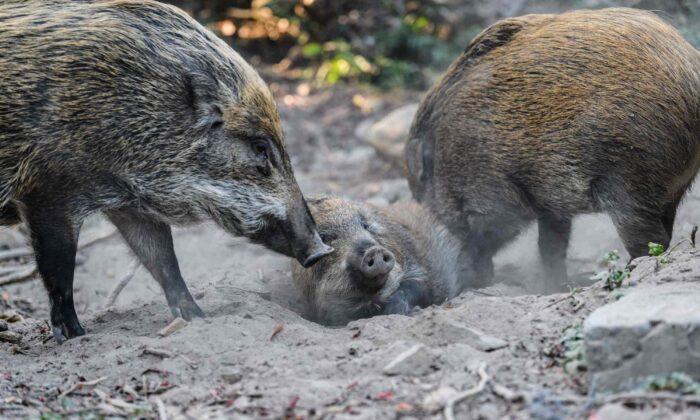News Analysis
China’s agriculture ministry recently
announced that African swine fever (ASF) was detected in seven dead wild boars in China’s Shennongjia Forestry District in Hubei Province.
China’s Ministry of Agriculture and Rural Affairs (MARA) confirmed its first ASF cases in Liaoning Province on Aug. 3, 2018. MARA subsequently confirmed 165 outbreaks in 32 Chinese provinces and regions.
The ASF deaths and culling by authorities
cut China’s 440 million domestic pig population in half in the first eight months of 2019, according to Rabobank, a Dutch bank specializing in food and agriculture.
An
analysis of the first 21 ASF outbreaks in China found them to be linked with feeding swill (kitchen garbage) to pigs in more than 60 percent of the cases. Contaminated equipment, bloodsucking flies, ticks, and other insects then spread the virus between domestic and wild pigs.
There is no ASF vaccine for the highly contagious virus, which is characterized by high fever, loss of appetite, and skin and internal organ hemorrhaging. The virus is extremely lethal to domestic pigs and wild boars. During the 10-day infection period, animals often
develop diarrhea, vomiting, coughing, and other respiratory difficulties.
The U.S. Department of Agriculture forecasted in October 2019 that China’s 2020 pork production would fall 25 percent from a year earlier. The forecast gap of 12 million metric tons would be equivalent to almost the entire U.S. annual production, the Associated Press reported.
Global prices of pork, the main source of protein in China, have climbed as Chinese importers buy more from Canada, Europe, and other suppliers. Chinese food prices jumped 21.9 percent from the prior year, led by a
135 percent spike in the price of pork.
Government authorities had
hoped food prices would fall after progress was made to unsnarl the severe congestion at Chinese ports that have prevented imported food deliveries.
Thousands of refrigerated containers carrying meat, seafood, and fruit from around the world were stuck at China’s ports for weeks after Beijing extended its Lunar New Year holiday, and cities around the nation restricted free movement to curb the spread of COVID-19, Reuters reported.
The port associations for Shanghai and Tianjin recently
announced that the backlog for unloading 20-foot refrigerated ocean containers—containing mostly frozen pork and chicken—had fallen from 27,000 in mid-February to 17,000 in the first week of March.
MARA’s disclosure of a new ASF outbreak in central China has raised concerns that another large precautionary culling of millions of Chinese pigs could threaten food security and drive food prices much higher.
That risk has intensified with the World Organization for Animal Health
reporting that new outbreaks of ASF have recently been reported near China’s northern and southern borders.
South Korea’s agriculture ministry
reported that 99 wild boars tested positive for ASF along the North Korea border—the cases were discovered from early February to March 3. South Korea reported ASF at 14 pig farms in September 2019 and culled
400,000 pigs. But the total number of wild boars affected since then has risen to
347, Yonhap reported.
The animal health agency in Burma (also known as Myanmar)
disclosed in early February that a small pig farm in the northern state of Shan had the nation’s first ASF case since December. On Feb. 22, a large pig farm in Kachin state near the Chinese border had its first ASF outbreak after
three hogs died.
The source of the latest infection is unknown, but “officials suspect illegal animal movements, swill feeding, and/or fomites (people and equipment).”






Friends Read Free